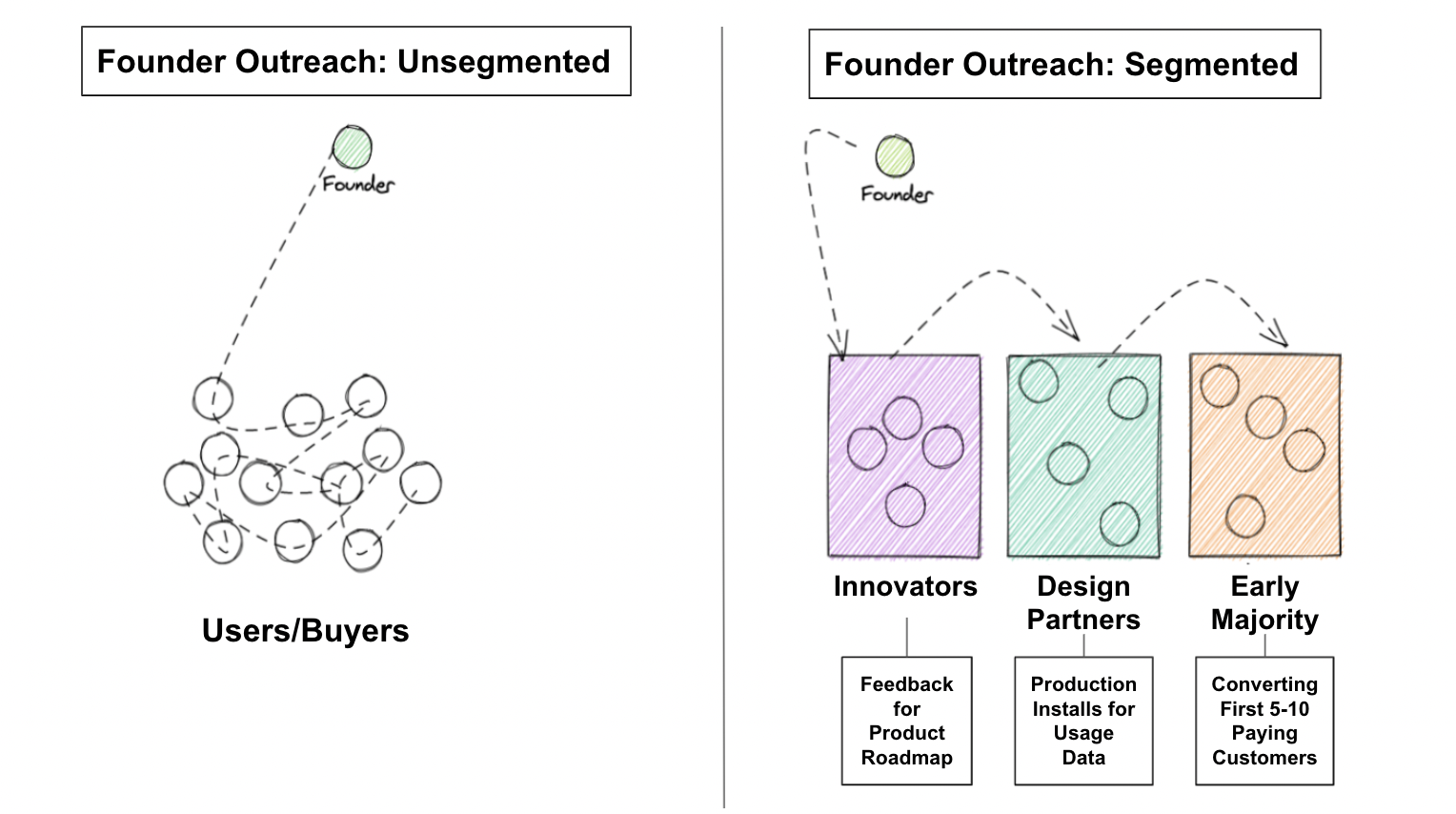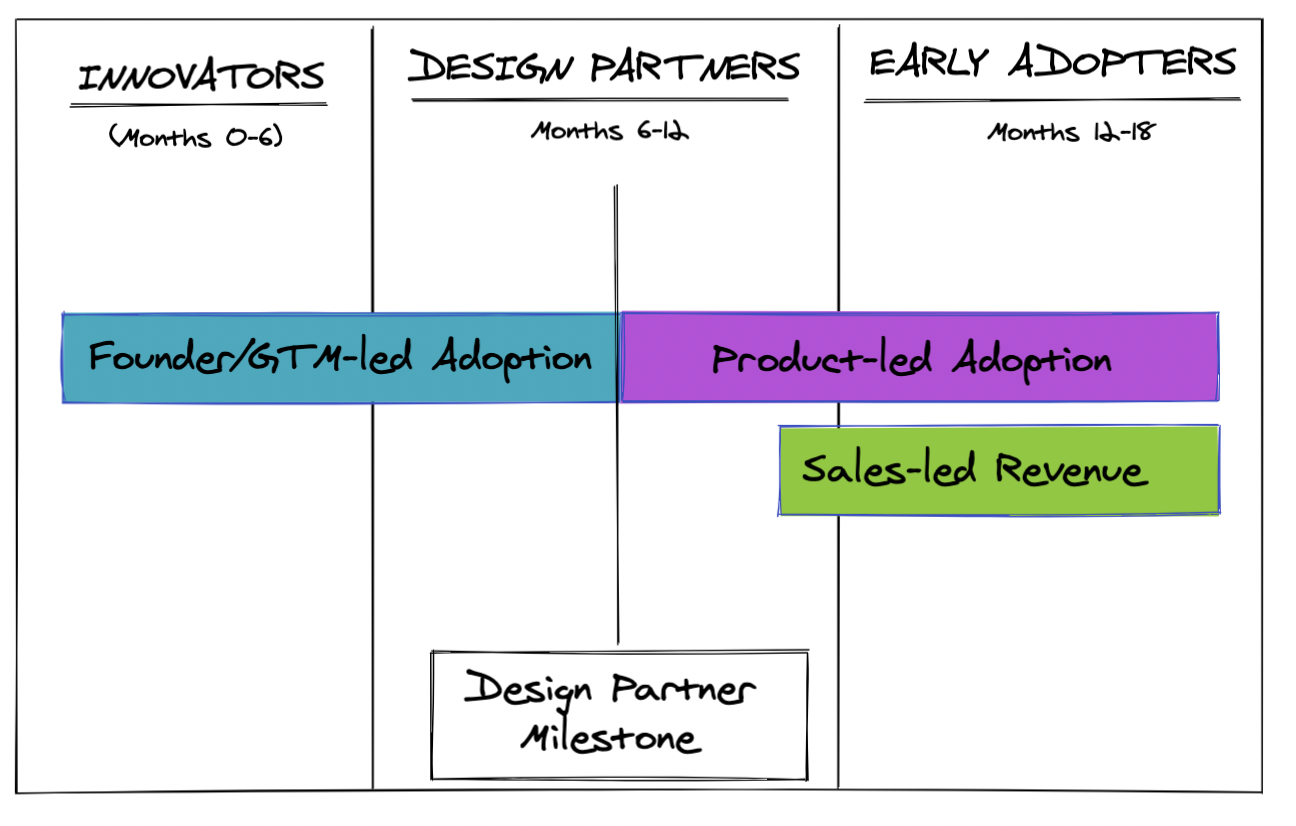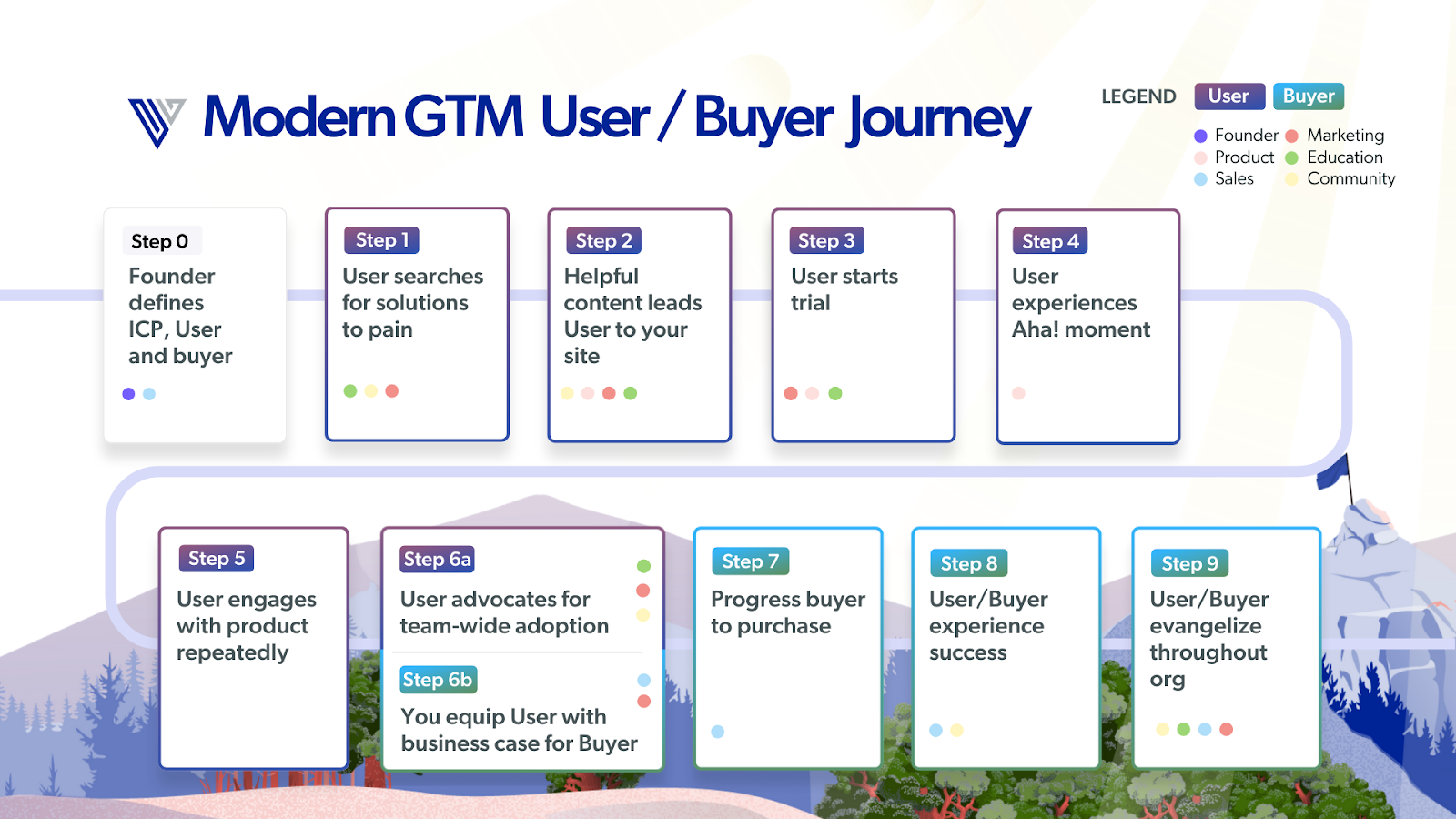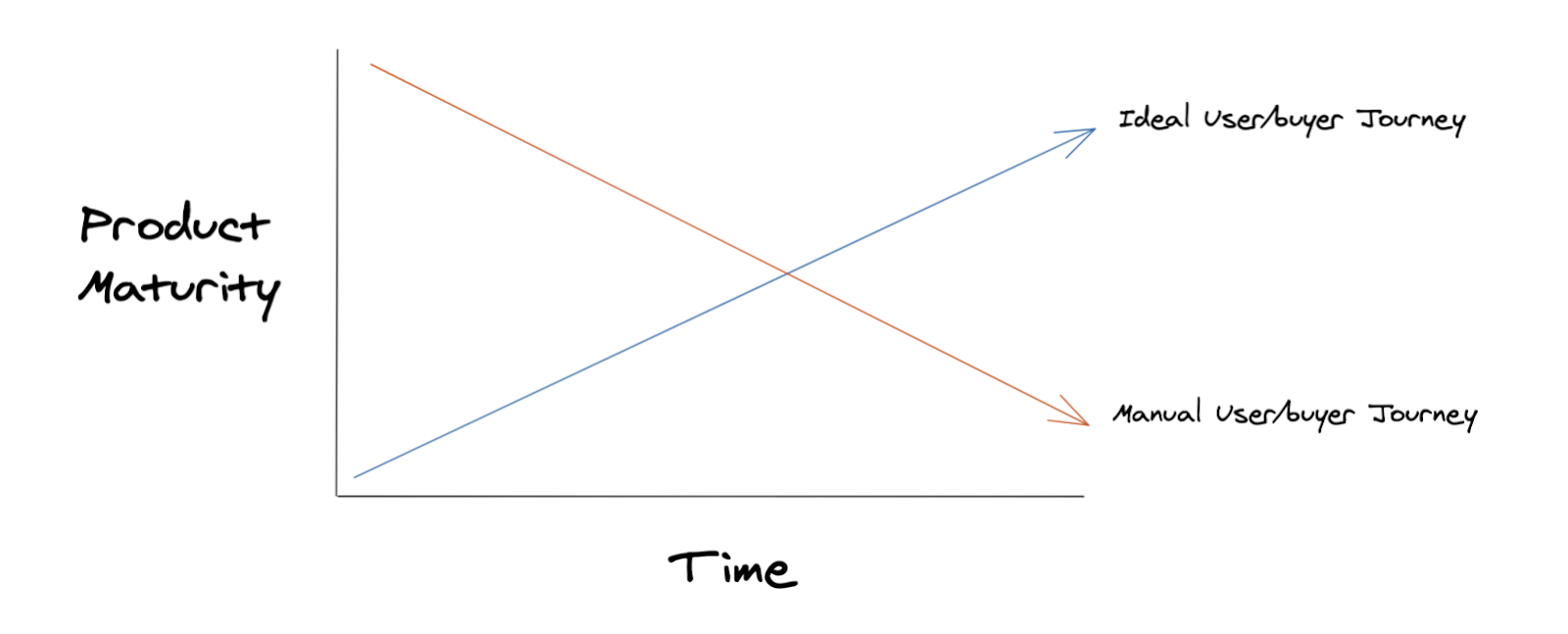

As an early-stage enterprise startup, you are introducing a discontinuous (disruptive) innovation. You’re asking USERS to change their current mode of behavior to rely on your product instead of what they’re using currently. Regardless of your product, there are three distinct market segments that you need to address in the right sequence to ensure you:
The most efficient way to achieve these objectives is to address each of three market segments in sequence, one at a time, with specific success metrics that you achieve before moving on to the next segment. Doing so provides you with the right insights at the right time in your product development to build adoption and get your sales flywheel going.
Following this systematic approach is the most efficient way to drive adoption and build a sales motion. Failing to do this almost always leads to getting mixed signals on your product direction from a variety of market segments and inevitably leads to burning as many as 12 months and a large amount of capital only to pivot later and follow this strategy.
In his book, Crossing the Chasm, Geoffey A. Moore introduced these market segments in discussing the product adoption curve. We build on that work here.
Innovators pursue new technology aggressively. They are enthusiasts who are passionate about the newest product ideas and the problems they solve. As experts in your product space, innovators’ feedback guides your GTM strategy — either providing evidence that your idea is worth pursuing that solves a real business pain, or helping you pivot so that it does.
To get enough feedback to be confident of your product direction, you need to get in front of 50–100 Innovators and run an interview playbook to capture their feedback.
Design partners are also technology enthusiasts. The difference between design partners and innovators is that design partners are motivated by solving a specific business problem to gain a competitive advantage. They’re willing to change how they operate, some to a significant degree, if your product can provide them a competitive advantage that their business can measure.
For this segment, your product must be a true beta or early general availability (GA) version. Bugs are expected, and early adopters will work through them with you, but they won’t tolerate failed installs or other major issues. Early adopters will work with you to develop a good product experience that you can carry into the early market.
It’s this willingness to build the product with you that gives early adopters the name design partners. Their feedback from using your product live is worth its weight in gold, so you might decide to give them a significant discount (30%–60%) or not charge them at all while they serve as a design partner.
Where design partners are willing to gamble on your product for a massive leap forward, the early majority simply want to make incremental, predictable improvements.
Making the leap from design partners to the early majority is one of the biggest challenges for early-stage startups and is where the “chasm” in Crossing the Chasm comes from. However, once you do win them over, they are sticky, most entering into multi-year agreements with good average sale prices (ASP).
In order to engage the early majority, your product must be without significant or obvious bugs and must be generally available (GA). The experience must be rinse and repeat from the demo, to installation process, to first production-level task execution, and beyond. For this segment, you’ll need a sales leader and full-time sales reps to scale this effort.
Once you’ve achieved this success metric, you’re ready to build a repeatable, predictable revenue machine around your product to scale rapidly.
The last point we need to drive home in this section is that you always need to optimize for adoption before optimizing for revenue. We’ve seen founders try to fix lack of adoption by throwing salespeople at the problem. This. Never. Works.
For example, we’ve worked with founders who’ve built products that line up perfectly with the problems USERS are looking to solve, but when they were interviewing innovators, they never asked what the easiest way for them to install the product in their environment would be. As a result, when the product was ready to test with design partners, the team had to spend an extra two months building out different integrations after learning their assumptions about how USERS would want to install, and who would be involved (enablers), were wrong. All of this could have been avoided if they dug into that during their innovator interviews.

Though this module is presented through the lens of sales, most of what’s here, especially with respect to understanding your USER and BUYER, represent the first steps you must take in order to enable each of the functions in your organization (sales, product, marketing, community, and education) to play their role in supporting the USER / BUYER journey.
We’re going to cover how to engage and convert USERs and BUYERs in the first three market segments you’ll need to dominate. The personas in each of these segments follow the same general USER / BUYER journey when it comes to adopting a new technology. There are differences in the exact nature of each step, but the themes are the same. We’ll use this journey as a common denominator throughout.

As you work through the market segments we’ve outlined, USERs and BUYERs will experience your product and their journey first as slides and wireframes, then as a rough beta they help you build, and finally as a fully fledged product that is self-service.
There is an inverse relationship between your product maturity and how automated a USER’s experience of it is, but the key is that you are always:
In the long run, this will allow your company to let your USERs inform the best ways to engage with them.

In the next articles, we’ll walk through all three segments of the adoption curve, from interviewing Innovators to installing with design partners and selling into the early majority. We’ll cover the tactics to deploy in order to achieve each success metric along the way, provide some considerations for hiring your team, and speak to how this all plays out in the context of the USER/BUYER journey.
Continue to: Define a GTM framework with innovators
OR
Read about: how Unusual’s team of experts in sales, marketing, education, community, and recruiting can embed with your startup to help build your business and hire our replacements.